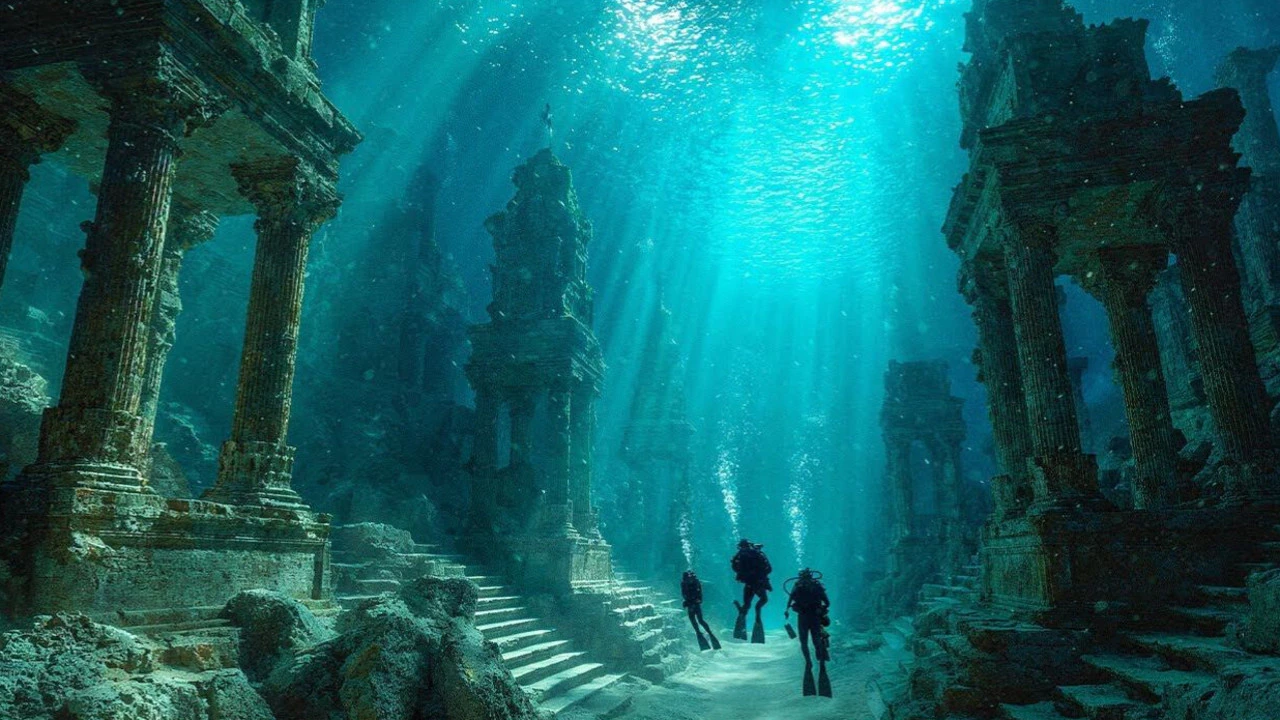By Carly Wright
Copyright news

The renewed interest comes amid a surge of social media speculation and advances in underwater technology that could finally reveal the truth behind this submerged metropolis.
Located near the Guanahacabibes Peninsula, the site features massive stone blocks, circular formations, and what appear to be pyramidal structures – igniting whispers of ancient civilisation that existed thousands of years ago.
The discovery was first made in 2001 by husband-and-wife marine engineer duo Paulina Zelitsky and Paul Weinzweig, who were scanning the ocean floor in search of Spanish shipwreck treasures using side-scan sonar technology.
Their scans revealed huge stacked stones as tall as three metres, located “more than 2,000 feet (610m) below the sea surface.”
“It’s a really wonderful structure which really looks like it could have been a large urban centre,” said Zelitsky.
While social media users today speculate the ruins may be proof of Atlantis, experts remain sceptical.
“It would be totally irresponsible to say what it was before we have evidence,” Zelitsky warned.
Cuban geologist Manuel Iturralde-Vinent and underwater archaeologist Michael Faught caution that the formations may simply be natural rock shaped by underwater currents and seismic activity.
Iturralde-Vinent admitted the structures were “extremely peculiar” but stressed the depth posed a big problem.
“It’s strange, it’s weird; we’ve never seen something like this before, and we don’t have an explanation for it,” he told The Washington Post.
He estimated that for the site to have once been dry land, the sea level would have needed to be about 2,300 feet (700m) lower than today.
That last happened during the Ice Age over 50,000 years ago – long before humans were believed to have arrived in the Americas.
Faught agreed. He said: “It would be cool if Zelitsky and Weinzweig were right, but it would be really advanced for anything we would see in the New World for that time frame.
“The structures are out of time and out of place.”
If it is indeed a city, it could predate all known civilisations in the Americas.
The ruins would be more than 6,000 years old – older than the Egyptian pyramids – and could rewrite parts of what we know about early urban development.
Despite the intrigue, up until now, the remote location and extreme depth have prevented detailed follow-up expeditions.
A planned dive in 2002 was scrapped, according to US oceanographer Sylvia Earle, and funding issues along with Cuba’s strict control over foreign expeditions have also been blamed for the lack of further investigation.
Today’s cutting-edge technology – from high-resolution 3D sonar imaging to remotely operated underwater vehicles – could finally allow researchers to map the site in unprecedented detail, revealing whether the formations are man-made or natural.
Until then, the discovery continues to fuel theories online.
“Civilisations that existed before the ice age, perhaps multiple civilisations that rose and fell… The historical knowledge that has been lost (or hidden),” one person posted on X.
Another wrote: “There is so much hidden history. Everything we been taught is a lie.”
“This discovery has been shrouded in secrecy and extremely unusual govt involvement by several countries which points to an organised attempt at a coverup. Why?” asked a third.
Whether it’s an undiscovered ancient city or a bizarre natural formation, the site off Cuba’s coast is clearly worthy of an Indiana Jones adventure.



